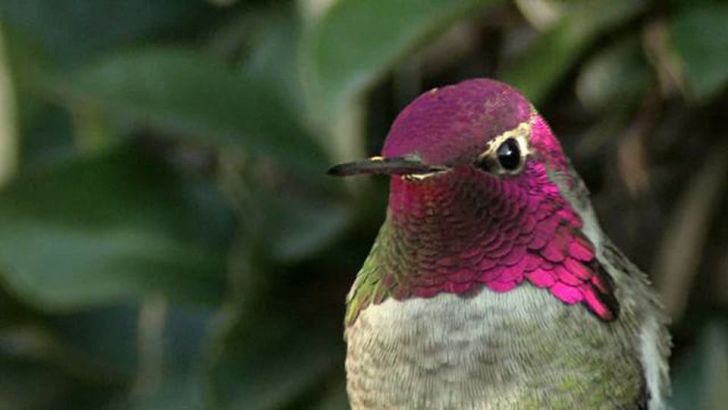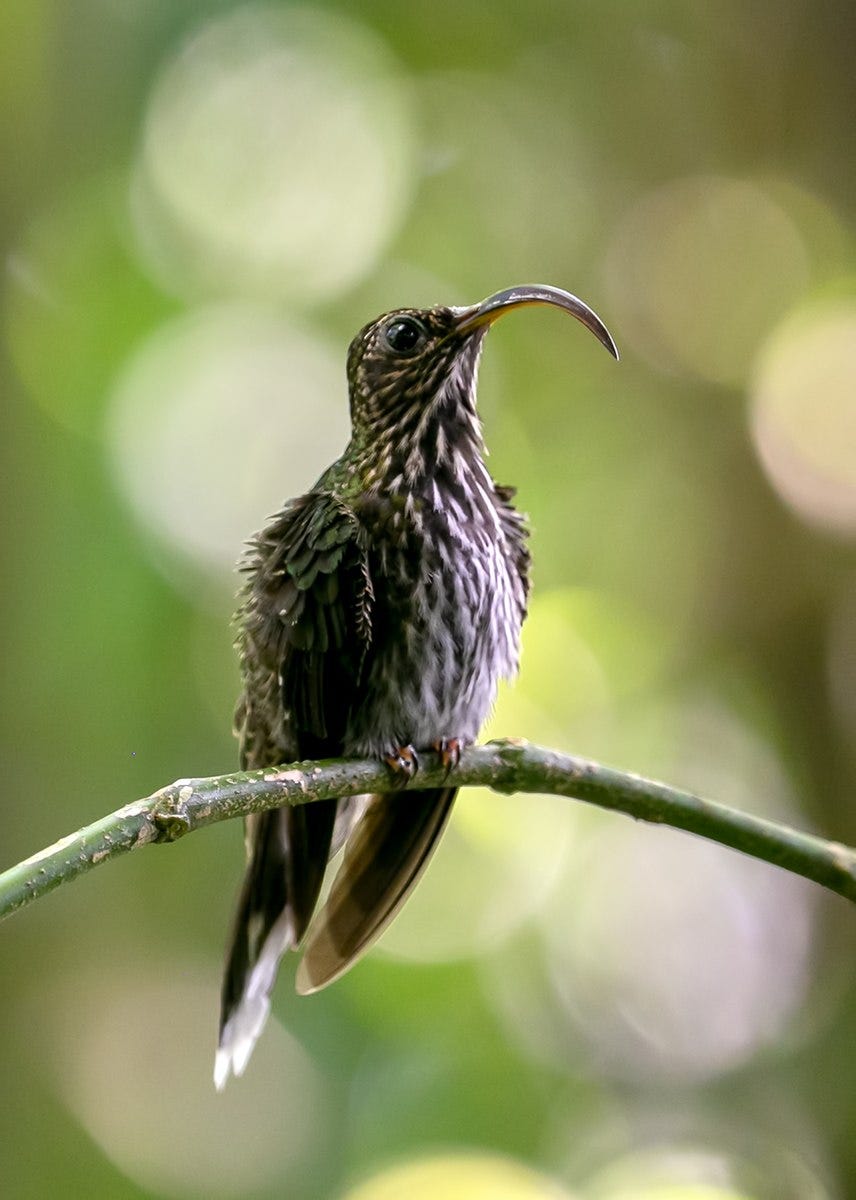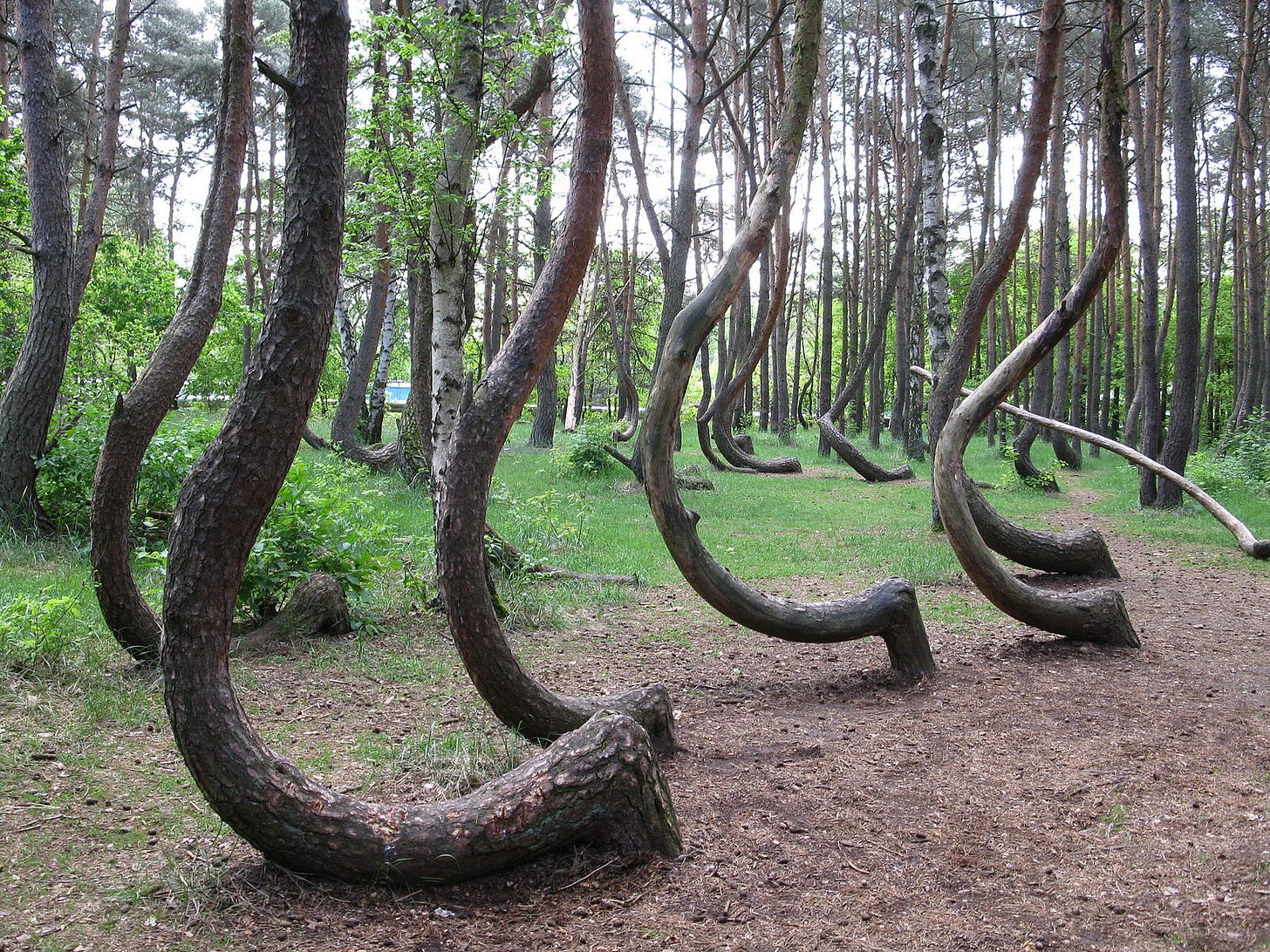Thing 1 – Hummingbirds
I have nothing against the Americas. Really, I don’t. My sporadic visits to both North and South have been entirely pleasurable experiences. But there’s one thing I find hard to forgive.
The bastards have hummingbirds, and we don’t.
Would it hurt them to spare us a few? There are over three hundred species, after all. They’re not going to miss the odd violet-fronted brilliant or white-tipped sicklebill (I mean, just look at it).
But no. They’ve kept them all to themselves.
There used to be hummingbirds in Europe. Or hummingbird ancestors, at least. But that was millions of years ago. It still stings.
That European hummingbird ancestor (Eurotrochilus inexpectatus, or ‘unexpected European hummingbird’, to give its proper name) appears in the fossil record about 30 million years ago. (It was only identified in 2004 after two specimens, which had sat in a drawer in a museum in Stuttgart for decades, were identified by Gerald Mayr).
But within the blink of an eye (OK, ten million years, but that amounts to the same thing in geological terms) they were in South America and all trace of them in the so-called Old World had disappeared.
The reason I get exercised about this is simple. Hummingbirds are brilliant.
(Some of them are so brilliant they even bear the name.)
They owe this brilliance to several features.
Their size, for one thing. Even the largest is smaller than a sparrow, and the smallest – the bee hummingbird of Cuba – is small enough (5 cm long, and weighing just 2 grams) that you could easily mistake it for an insect. It’s the smallest (and possibly the cutest) dinosaur ever.
Then there’s the plumage, iridescence often to the fore. We love a bit of iridescence.
And then there’s the flying, their mastery of which they owe to an anatomical quirk unique among birds. They have a rotating ball-and-socket joint in their shoulder which allows their wings to rotate in a 140-degree arc, meaning they can produce thrust on the upstroke as well as the downstroke, their wings moving in a flattened figure-of-eight at between 18 and 80 beats per second (depending on species).
All this enables them to execute the most difficult trick in the repertoire of any flying thing: hovering.
Hovering is really hard work. Just try it some time.
They can also fly backwards. I mean, come on.
One of the more spectacular hummingbird tricks wouldn’t look out of place in a Cirque du Soleil performance. It’s performed by horny male Anna’s hummingbirds, and it goes like this.
They fly up to a high point, hang in midair for a second then plummet earthwards, pulling out of the dive at just the point – and this is the clever bit – where their putative mate is perched, waiting to see what kind of moves he’s got, like a judging panel.
But it’s not just about the moves. Because as the male bird flattens its trajectory and whooshes past the female’s perching post, it makes a sound. This isn’t just the sound of something fast moving through the air (although no doubt if you were close enough you would indeed hear the rush of displaced air) but of air moving quickly through the hummingbird’s tail feathers. And it sounds, near as dammit, like the kind of thing the bird might make with its voice – a high ‘chrink’ sound.
What all this adds up to is a touch of magic, a sense that these birds are not of this world, on the verge of being not-birds. Evolution has taken them to the limit of what a bird can be.
Just one. Please?
If you felt like reading more about hummingbirds after all that, then I commend to you this excellent piece by Katherine Rundell.
And if you then felt like reading even more, you need look no further than Jon Dunn’s wonderful book, The Glitter in the Green.
And if that isn’t enough for you, then there’s half a chapter on hummingbirds in Taking Flight, which will be published in just – eek – eleven weeks. Perhaps you might consider pre-ordering it.
Thing 2 – Playing the long game
It takes a lot of faith to start a project knowing it won’t be completed in your lifetime. Standard practice back in the day, of course, as anyone involved in the building of a cathedral could have told you – submitting to something much larger than yourself was a mark of faith. But some projects took much longer than even the planners anticipated.
Köln cathedral is probably the most obvious example, its construction beset by financial problems and the inconvenience of its ornate Gothic style going out of fashion for a couple of centuries. Given a time machine I’d be tempted to use it not to kill Hitler but to transport the cathedral’s first builders from the year 1248 to its completion in 1880 and show them how their project turned out.
You could pull the same stunt with master builders Matthias of Arras and Peter Parler, the first architects of St Vitus cathedral in Prague (started 1344, finished 1929), and it would be worth doing, too, for the duomo in Milan (1386 to 1965), this last task facilitated by the existence of this list, which would theoretically enable you to track down each of the 77 architects who supervised the project in its 600-year history (I’d be fascinated to know how they managed to get through six of them in the year 1399. Were they collaborating? Sacked? Bumped off?)
The most famous incomplete building of the 20th and 21st centuries, the Sagrada Familia in Barcelona, is a relative whippersnapper when compared to those projects. When its designer Antoni Gaudí died in 1926 it was just a quarter finished, but this didn’t concern him.
“My client is not in a hurry.”
You could say the same about the experiment that prompted this train of thought. Initiated in the year after Gaudí’s death, this pitch drop experiment at the University of Queensland is expected to continue for at least another hundred years.
A pitch drop experiment, in case you're not familiar, is conducted to ascertain the viscosity of pitch (a word commonly applied to bitumen, although it really means any extremely viscous liquid that seems solid). What you do is wang some in a funnel and wait, counting the drops as they appear and measuring the time between them.
This is what Thomas Parnell did in 1927, thus starting – according to the Guinness Book of Records, and who am I to argue? – ‘the world's longest continuously running laboratory experiment’.
That the initial preparatory phase – allowing the liquid to settle while the funnel was still sealed – lasted three years shows that Parnell knew in advance just how long-term the project would be. It’s been going for 87 years, and is expected to clock up at least another hundred. Nine drops have fallen so far; the tenth is expected to fall in eight years or so. You can watch it live here.
Fans of extreme irony and bathos will be delighted to learn that the seventh drop went unwitnessed because Professor John Mainstone, who took over supervision of the project in 1961, had ‘stepped away to make a cup of tea or something’.
Away from the field of science, it was probably inevitable that someone would at some point set out to write the longest piece of music ever composed, and it’s no surprise that it was John Cage, composer of 4’33” and other toe-tapping humdingers (you can find performances of 4’33” by a number of performers, including the Berlin Philharmonic, Death metal band Dead Territory, and (for many people the definitive rendition) Nola the cat.)
Cage’s As Slow As Possible started life as a piano piece, and when played in that version performances vary between 20 and 70 minutes in duration. But it really came into its own when arranged for organ, an instrument whose note lengths are limited neither by the natural decay of a single sound nor the feebleness of the human spirit.
The longest complete performance of As Slow As Possible on record, by Christopher Anderson on March 8, 2022 at Perkins Chapel on the campus of Southern Methodist University, lasted 16 hours.
But in Halberstadt in Germany a performance of the organ version started in 2001, and it’s not going to finish any time soon. It’s planned to last for 639 years (to mirror the length of time between the installation of the first permanent organ in the cathedral and the beginning of the performance). The next note change is scheduled for February 5th, 2024 – amend your diaries accordingly.
As Slow As Possible spawned a visual homage in the Finnish GIF project As Long As Possible. It consists of 48,140,288 frames, each lasting just under 11 minutes, making the total playing time of the GIF over 1000 years.
But the prize for long-term planning must go to Rodney Graham’s Parsifal (1882 - 38,969,364,735), a looping composition which if pursued to its logical conclusion would take longer than the lifespan of the universe to complete.
I’m sure Gaudí would approve.
Thing 3 – Coffee
Fed up with flat whites? Had enough of caramelised macadamia oat lattes?
This six-minute film is a delight, not least because it reminds us just how unimaginative we are when it comes to our beverage choices. Egg coffee, anyone?
Thing 4 – Strange Forests
I do like a tree. And a crooked or wonky tree has its own allure. So learning of the existence of the Crooked Forest made me want to drop everything and get myself there as soon as possible.
And then you get clicking and soon you’ve made a list of weird forests you must visit immediately.
Avenue of the Baobabs, Madagascar
Underwater forest, Kaindy Lake, Kaliningrad.
Thing 5 – Real Time Clock
There are things you see about the place – everyday things – that bring cheer to the world and people’s lives. This ‘real time’ clock, at Paddington Station in London, is one such thing.
It has a twin in Schiphol airport, so I gather.
Here their designer Maarten Baas talks a bit about them.
Thing 6 – Napoleon’s gloves
In these times of universal untruths it’s difficult to sort out fact from fiction. So I have absolutely no idea whether this is in fact a real thing. But I love it anyway.












The best time to start building a cathedral was 200 hundred years ago. The second best time is now.
Schiphol Airport makes hanging around almost bearable - as well as the clock (which I spent far too long watching) it has an actual ART GALLERY, with a rotating collection from the Rijksmuseum. And then of course it has waffles...
Beat that, Heathrow.